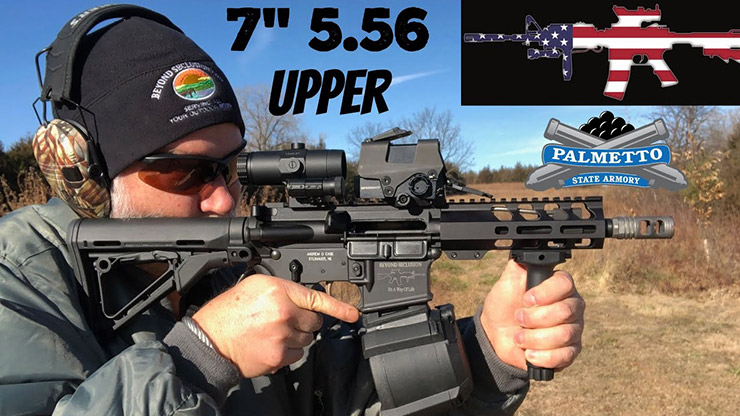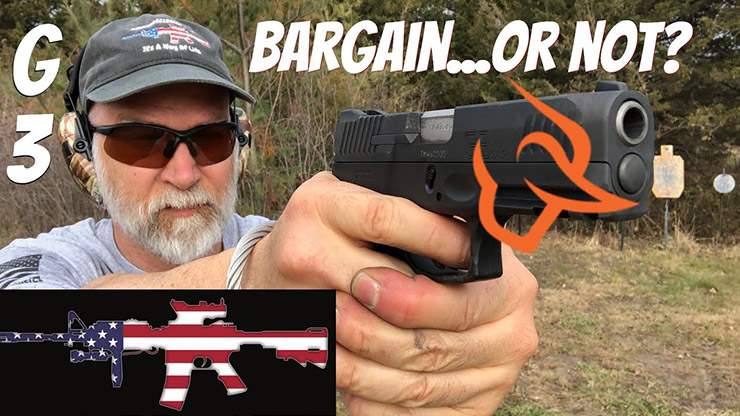America’s Ammunition Company or AAC is hitting the ammo industry like a sledgehammer, they are still somewhat unknown to some but were to spreading fast about the quality of the ammo, and especially for the price.
I have found the ammo to be exceptional, and not just for the cost, in literally thousands of rounds, guys, thousands of rounds, I have shot in all the calibers that they offer, I have yet to have one single light primer strike or issue or anything, and that is the honest truth. Thus far I have reviewed everything they produce for the 9 mil and the 5.56.
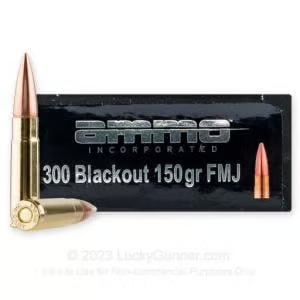
Quantity:
20 rounds per box
Manufacturer:
Ammo Inc.
Bullets:
150 grain full metal jacket
Casings:
Boxer-primed brass
For this review I’m going to cover all that they currently have for the 300 Blackout, and I’ve got one of the Jackals here that I’m reviewing and I’m going to use that for some of this as far as the feet per second and some of the technical data that I’m going to share with you. I’m going to chronograph all of it out of a PSA 16-inch barrel, and then the Jackal with the 8.5-inch barrel, to show the difference between the two, and I’m going to show you all this in the specs and tech, and then we’re going to test its accuracy using the 16-inch barrel. The accuracy in the Jackal will be in that review when I get that one done.
Welcome to Beyond Seclusion where I only give you my honest opinion and it is what it is. Real quick, AAC does sponsor me, yeah, the elephant in the room, and some people have issues with that. I really don’t see how it’s an issue because one of my favorite sayings is, and I say it in every single review, “It is what it is”, so the feet per second, it is what it is, the accuracy I’m shooting, I’m not skewing the results, I’m not down there punching holes in the paper, it is what it is. So, an ammo review is KISS, keep it simple stupid, they’re really, at least in my opinion, there’s no opinion in the review, it’s just simply the facts and you decide what you think.

Now that that’s out of the way let’s check the speeds and energy, I’m going to use a calculator, an energy calculator, because I want to show you the energy, the foot pounds of energy for each of these fired out of the 8.5 and the 16-inch barrel because that’s going to affect possibly what you’re looking to shoot it out of.
America’s Ammunition Company 300blk
Casing: AAC Brass – Boxer Primed, Fully Reloadable
Bullet Type: Hornady V-Max
Bullet Weight: 110gr
Average Velocity ( fps ) 8.5” 2212
2228, 2216, 2208, 2224, 2186
Energy at Muzzle ( ft/lbs ) 16” 1195
Average Velocity ( fps ) 16” 2526
2422, 2559, 2552, 2633, 2462
Energy at Muzzle ( ft/lbs ) 1558
BC (if available ): .290 G1
America’s Ammunition Company 300blk
Casing: AAC Brass – Boxer Primed, Fully Reloadable
Bullet Type: FMJ
Bullet Weight: 125gr
Average Velocity ( fps ) 8.5” 2043
2086, 1924, 2059, 2064, 2084
Energy at Muzzle ( ft/lbs ) 1195
Average Velocity ( fps ) 16” 2233
2157, 2288, 2243, 2247, 2234
Energy at Muzzle ( ft/lbs ) 1384
America’s Ammunition Company 300blk
Casing: AAC Brass – Boxer Primed, Fully Reloaded
Bullet Type: FMJ
Bullet Weight: 150gr
Average Velocity ( fps ) 8.5” 1807
1827, 1815, 1792, 1802, 1801
Energy at Muzzle ( ft/lbs ) 1087
Average Velocity ( fps ) 16” 1983
1996, 1980, 1987, 1976, 1977
Energy at Muzzle ( ft/lbs ) 1310
America’s Ammunition Company 300blk
Casing: AAC Brass – Boxer Primed, Fully Reloadable
Bullet Type: Hornady A-Max
Bullet Weight: 208gr
Average Velocity (fps ) 8.5” 1011
967, 1015, 1028, 1008, 1039
Energy at Muzzle ( ft/lbs ) 472
Average Velocity (fps ) 16” 1086
1105, 1076, 1091, 1068, 1088
Energy at Muzzle ( ft/lbs ) 545
BC ( if available ): .648 G1
America’s Ammunition Company 300blk
Casing: AAC Brass – Boxer Primed, Fully Reloadable
Bullet Type: Sierra MatchKing HPBT
Bullet Weight: 220gr
Average Velocity ( fps ) 8.5” 1021
988, 1013, 1020, 1051, 1034
Energy at Muzzle ( ft/lbs ) 509
Average Velocity ( fps ) 16” 1094
1090, 1079, 1089, 1089, 1125
Energy at Muzzle ( ft/lbs ) 585
BC ( if available ): .608 G1
Quick note on the heavier bullets, I was told that it’s common knowledge, but there’s going to be a lot of you that it’s not common knowledge when you’re looking at the heavyweight bullets. The 208, the 220, they typically are designed to run out of suppressed only, a lot of folks aren’t going to know that. So, if you don’t have a suppressor, regardless of the platform, you very likely are going to run into issues with it not cycling, so if you’ve got a an AR-15 in a 300 Blackout, you got a Sig, you got the Jackal. I personally, I’ve lucked out, I’ve been able to cycle them through most of the guns that I have, but I think that that is the exception. So, know that if you’re getting a 300 Blackout and you don’t have a suppressor it’s very likely that you’re going to run into cycling issues with the heavy rounds.
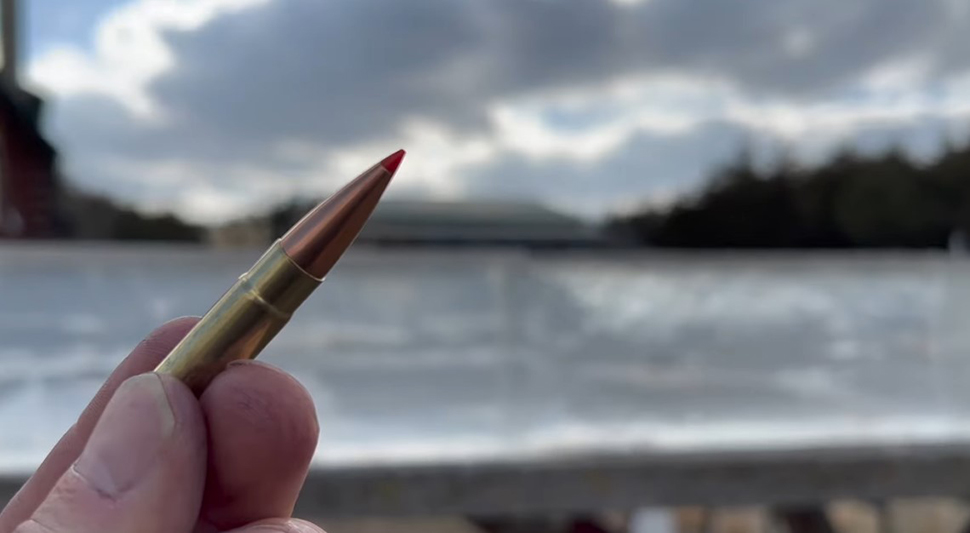
When you look at the foot/pounds of energy, especially for hunting purposes, the clear winner is 110 grain, coming out at 1995 foot/pounds of energy out of the 8.5, and 1558 foot/pounds out of the 16-inch barrel. For hunting purposes, the longer the barrel with the lighter load is definitely best with notable differences between the two. As we move up in weight that gap significantly decreases, look at the similarity with the 220 grain in both speed and energy from the 8.5 to the 16-inch barrel
So, what’s the bottom line? If you’re looking to shoot the 300 mostly suppressed then I think you’re definitely going to want to go with a shorter barrel, if you’re looking primarily for hunting then you’re obviously going to want to go with the longer barrel accuracy, but the biggest thing is the energy.
Just a quick note, guys, depending on your location, and what your supersonic versus subsonic speeds are, you may not be able to achieve subsonic out of the 16-inch barrel, the average speed for the 220 and 208 in my location are not suppressed with every round, in fact most of them are not, and, yes, before anybody starts arguing and leaving comments, atmospheric conditions, elevation, geographic location, will change the speed of supersonic versus subsonic, not huge differences, but enough where we’re at in this particular case to make that difference. I especially notice this with my 22 Long Rifle a lot of times things that should be subsonic here in my location or not.
I have noticed that here where I’m at in the typical weather environmental atmospheric conditions I need to stay at 1020 feet per second or below, it seems like when I go above that, then I start seeing here in the supersonic crack.
It is what it is with the speeds and the energy, there’s really no opinion there. Let’s check for accuracy at 100 yards using the 16-inch barrel, and to do the accuracy out of the Jackal that will be on that review.
This is what I’m going to use for the accuracy test, I did a review on this, this is PSA’s 300 Blackout upper with a 16-inch barrel, I’ve got the right on 7 Conquer, with a match grade trigger in there, so really it should be down to pretty much the upper and the ammo as far as accuracy goes, and I have had good luck with the upper.
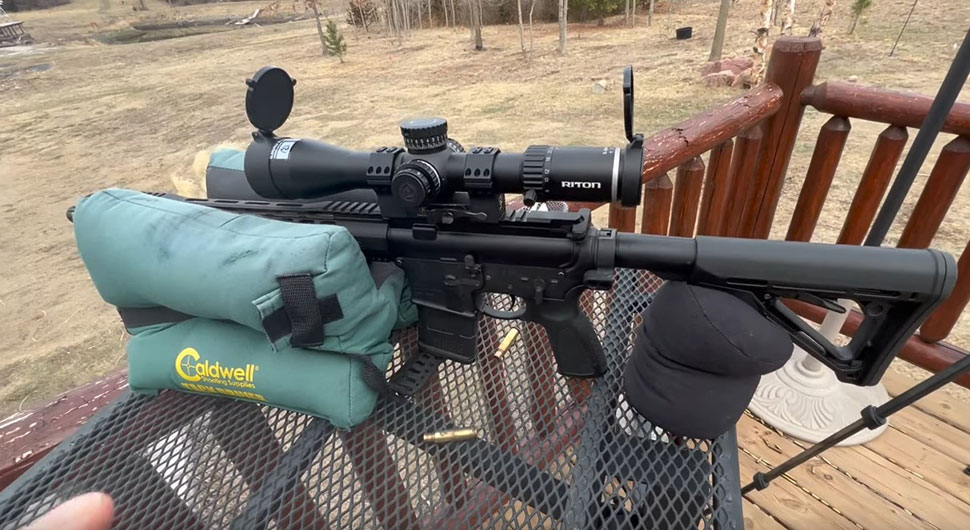
I got the 208 grain, it’s going to drop a lot, I’ve got a test target, I’m gonna fire one round, we can see how far it’s gonna drop, and then I can use the adjustments in the reticle and bring that up and hopefully have them on target.
I’ll show you what I’m seeing, so it’s dropping, 10 MOA and that’s the adjustment that I’m making to put those on the target. That gives you an idea of how slow they’re going compared to the lighter load. Alright, let’s just go take a look at the groups.
So, we started down here going left to right, this is the 110 A-Max, that’s nice, actually that’s good, I’m happy with that. Then we went to the 125 grain Full Metal Jacket, that’s actually not bad, I don’t think for range ammo, and then here we have the 150, but we were dropping, yeah, you know, you decide what you think, and then this was my test so I fired the 208 and also the 220 and that was the 208 I believe and that was the 220, and so then I made that adjustment and here’s the 208, you know, is what it is, and then here’s the 220, that’s 10 shots, that’s a little bit better. So, as far as the heavier goes, I think I’m going with the Sierra MatchKing, but definitely the 110 A-Max I think is the winner for accuracy.
This is a windy day, I really want to show you that’s a 10 shot group with the Full Metal Jacket, you get rid of the two flyers and that’s really solid, I was really happy with that, and then this is the 110 A-Max, get rid of the flyers, same thing, we’ve got a group. The Full Metal Jacket really did well. So, then I went to the 120 grain Sierra MatchKing, as aiming here and the shots were coming down here, that’s about 12 MOA drop at 100 yards, so I’m gonna try taking the scope and using the 12 MOA and putting here at the crosshairs up here and see what we can get.

That 220 grain, when I actually moved down here and I was putting the 10 MOA line here I really got a pretty decent group, I’m guessing these were maybe flinches or wind gusts because that’s pretty consistent, one, two, three, four, five, six, seven, there’s eight,
I had a couple test ones there, so it’s not as bad as it was looking up here, that’s the 220 grain, and then I did the control with the Hornady 208 grain and you did the same thing, I used the 10 MOA line and, man, it uh it was kind of all over the place. I’m really not sure what to make of that, I usually have fantastic luck with Hornady, I don’t have an explanation, just wasn’t liking that.
There you have it, guys, it is what it is, you decide what you think. I hope you enjoyed the review, I hope you found this helpful, I hope this answered any questions that you might have about AAC’s ammo, especially with the 300 Blackout. Anyway, if you did find it helpful be sure to hit that subscribe button, guys, that really does help the most.
Like and comment, until next time, happy shooting, remember to educate our young people to shooting and gun safety, educate everybody about gun safety, and every time we’re out on the range, every time we’re shooting, especially these days, all eyes are honest that makes you and me ambassadors for the Second Amendment, so be a good ambassador, guys, represent us all well and be a safe and responsible gun owner.


